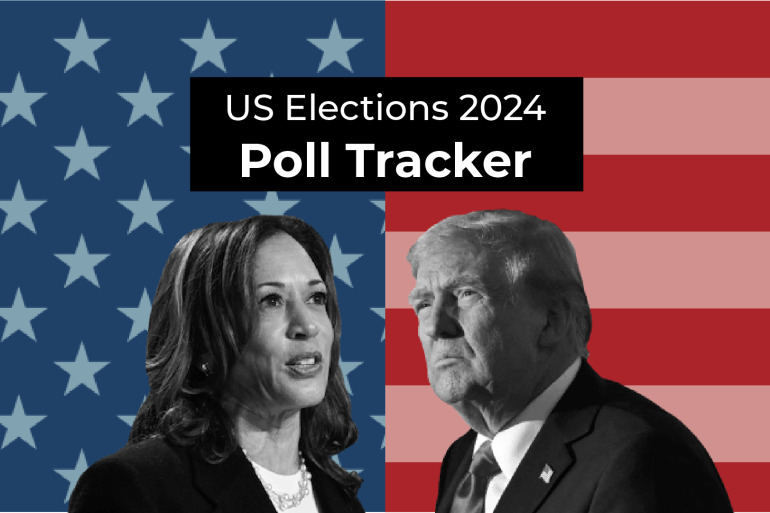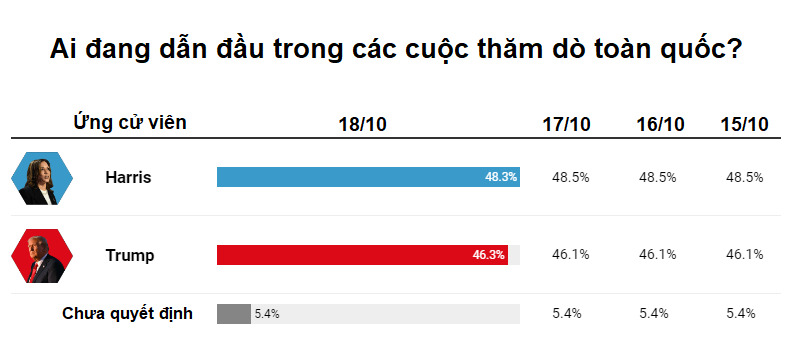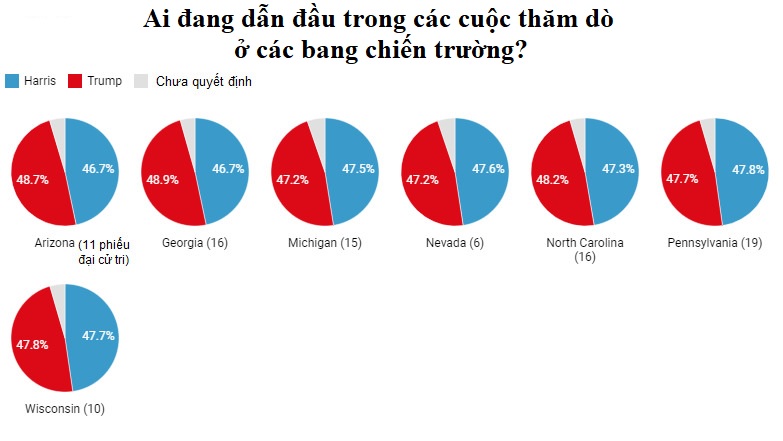(CLO) The US election campaign is in its final weeks. Voters will go to the polls on November 5 to elect the next president. Early voting is already underway in several battleground states such as North Carolina, Georgia and Michigan.
So, with less than three weeks to go until the election, Democratic Vice President Kamala Harris and former Republican President Donald Trump are competing to convince undecided voters.
To win, a candidate needs to win 270 of the 538 electoral votes. Electoral votes are allocated across states according to their relative population.

Illustration: AJ
Who is leading?
According to FiveThirtyEight's daily election poll tracker, Ms. Harris currently leads in national polls and leads Mr. Trump by 2.4%.
But the race remains extremely close. FiveThirtyEight’s election forecast shows Harris as the favorite to win 54 times out of 100, while Trump is favored to win 46 times out of 100.

Source: 538/ABC News
Which states could change the election results?
As usual, the battleground states will continue to play a decisive role in the outcome of the race for the White House. This year, the battleground states are Arizona, Georgia, Michigan, Nevada, North Carolina, Pennsylvania and Wisconsin.
In the 2020 presidential election, Georgia flipped from Republican to Democratic after nearly 30 years of voting Republican. Meanwhile, in Arizona, Democrats won by a narrow margin of just 0.3%.
Polls show Mr Trump and Ms Harris in a tight race in battleground states. Polls in these states are more important than national polls because the Electoral College chooses the president.

What happens if there is a draw?
There are 538 electoral votes in total. To win, a candidate must get at least 270 votes. Given the nature of how electoral votes are distributed, a tie results when each side gets 269 votes.
If no candidate wins at least 270 electoral votes, a runoff election will take place in which the US House of Representatives will decide the winner.
Each state delegation in the House of Representatives casts one vote, and a candidate must receive a majority (26 out of 50) of the state delegation's votes to win.
The US Senate then elects the vice president, with each senator casting one vote and needing a majority (51 votes) to win.
Are polls completely accurate?
Polls are never 100% accurate. Polls in both the 2016 and 2020 US elections underestimated the popularity of Republican candidates.
Part of the reason polls have been inaccurate in recent years has to do with voter access. Polls are often conducted by phone, but few people tend to return calls. In recent years, for example, Trump voters have chosen not to respond to polls.
Additionally, changes in voter turnout have affected the accuracy of polls. For example, in 2020, voter turnout was much higher than expected.
Ngoc Anh (according to AJ)
Source: https://www.congluan.vn/thong-ke-va-do-hoa-ve-cuoc-dua-dang-dien-ra-sit-sao-giua-ba-harris-va-ong-trump-post317392.html




![[Photo] Closing of the 11th Conference of the 13th Central Committee of the Communist Party of Vietnam](https://vstatic.vietnam.vn/vietnam/resource/IMAGE/2025/4/12/114b57fe6e9b4814a5ddfacf6dfe5b7f)

![[Photo] Overcoming all difficulties, speeding up construction progress of Hoa Binh Hydropower Plant Expansion Project](https://vstatic.vietnam.vn/vietnam/resource/IMAGE/2025/4/12/bff04b551e98484c84d74c8faa3526e0)






















































































Comment (0)